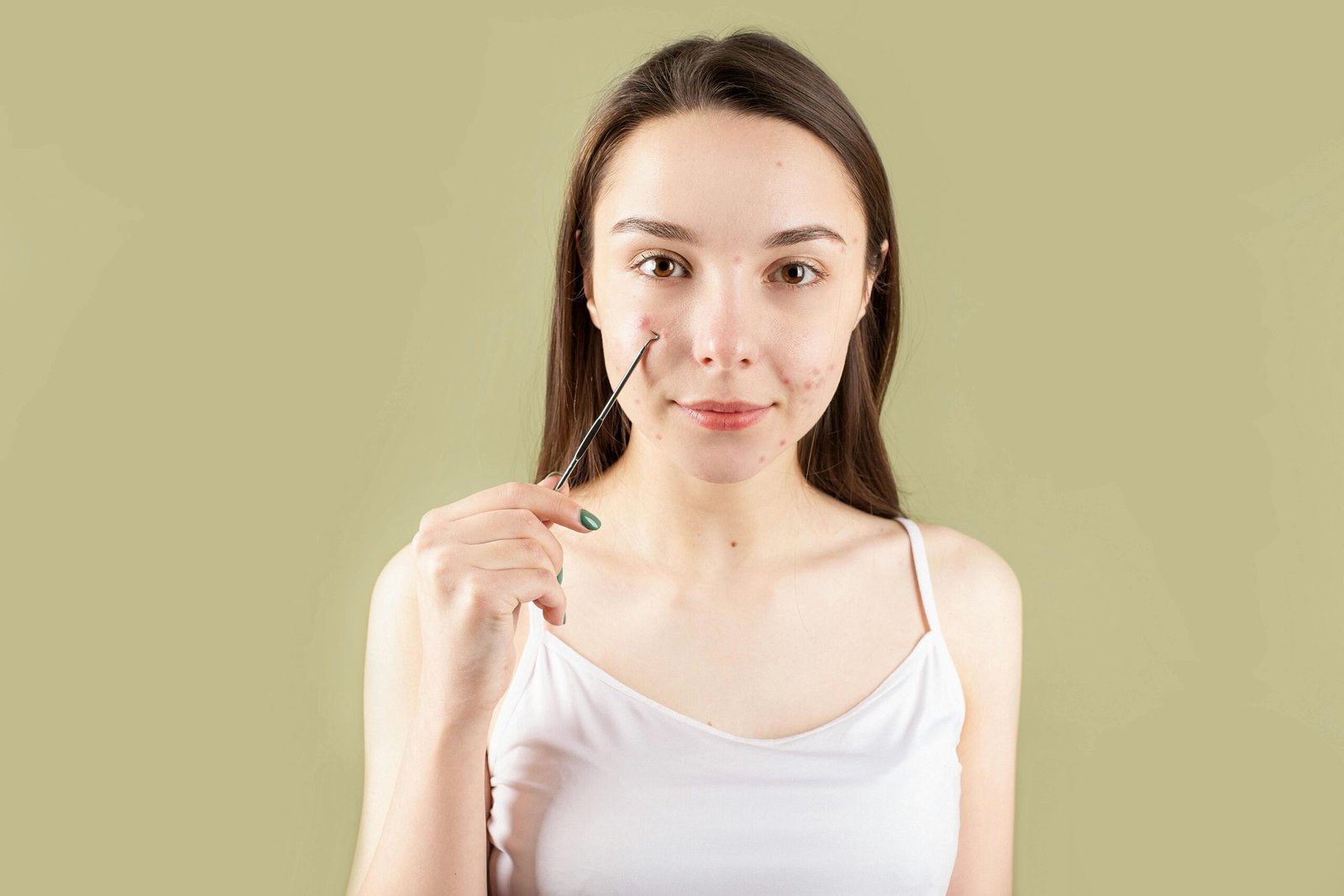Acne is a common skin concern, but not all acne is the same. Two types of acne often confused with each other are fungal acne and bacterial acne. Knowing the difference between these two can help you choose the right treatment and prevent further skin issues. In this article, we’ll explore the differences, their causes, symptoms, and how to treat them effectively.
What Is Fungal Acne?

Fungal acne, also known as Malassezia folliculitis or pityrosporum folliculitis, is caused by an overgrowth of yeast (a type of fungus) that naturally lives on the skin. When this yeast grows out of control, it can infect the hair follicles, leading to small, itchy, and uniform bumps on the skin.
Causes of Fungal Acne
- Overgrowth of Yeast: The primary cause of fungal acne is an imbalance in the skin’s microbiome, where yeast begins to overpopulate.
- Humidity and Sweat: Hot and humid environments can exacerbate fungal acne, as sweat creates an ideal environment for yeast to thrive.
- Oily Skin: Excess oil production can trap moisture and create a breeding ground for yeast.
- Use of Antibiotics: Long-term use of antibiotics can disrupt the balance of bacteria on the skin, allowing yeast to grow unchecked.
- Tight Clothing: Wearing tight, non-breathable clothing can trap sweat and oil, contributing to fungal acne.
Symptoms of Fungal Acne
- Uniform Bumps: Unlike bacterial acne, fungal acne usually presents as small, uniform bumps, often on the forehead, chest, and back.
- Itchiness: One of the key symptoms that differentiate fungal acne from bacterial acne is itchiness.
- Clusters: Fungal acne tends to appear in clusters rather than as individual pimples.
- No Pus: The bumps in fungal acne typically don’t have whiteheads or pus-filled centers.
What Is Bacterial Acne?
Bacterial acne, or simply acne vulgaris, is the most common form of acne. It occurs when hair follicles become clogged with oil, dead skin cells, and bacteria, leading to inflammation and the formation of pimples, blackheads, and whiteheads.
Causes of Bacterial Acne
- Clogged Pores: The primary cause of bacterial acne is the clogging of pores by excess oil (sebum), dead skin cells, and dirt.
- Bacteria: The bacteria Propionibacterium acnes (P. acnes) thrive in clogged pores, leading to inflammation and acne.
- Hormonal Changes: Hormonal fluctuations, especially during puberty, menstruation, or pregnancy, can increase oil production and trigger bacterial acne.
- Diet: Diets high in sugar and dairy products may contribute to bacterial acne by affecting hormone levels and oil production.
- Stress: Stress can trigger or worsen bacterial acne by increasing oil production in the skin.
Symptoms of Bacterial Acne
- Variety of Lesions: Bacterial acne can present as blackheads, whiteheads, papules, pustules, nodules, and cysts.
- Inflammation: Bacterial acne often causes redness, swelling, and tenderness around the affected area.
- Pus-Filled Pimples: Unlike fungal acne, bacterial acne can result in pimples filled with pus.
- Scarring: Severe bacterial acne can lead to scarring, especially if not treated properly.
Key Differences Between Fungal Acne and Bacterial Acne
Understanding the differences between fungal acne and bacterial acne is important for effective treatment.
- Cause: Fungal acne is caused by an overgrowth of yeast, while bacterial acne is caused by clogged pores and bacteria.
- Appearance: Fungal acne usually appears as small, uniform, and itchy bumps, while bacterial acne presents a variety of lesions, including blackheads, whiteheads, and pus-filled pimples.
- Location: Fungal acne often affects areas with more sweat and oil, like the forehead, chest, and back, whereas bacterial acne commonly occurs on the face but can also appear on the chest and back.
- Treatment: Fungal acne responds to antifungal treatments, while bacterial acne requires antibacterial treatments, such as topical or oral antibiotics.
How to Treat Fungal Acne
Treating fungal acne involves addressing the overgrowth of yeast and restoring balance to the skin.
- Use of Antifungal Treatments: Over-the-counter antifungal creams or shampoos containing ketoconazole, selenium sulfide, or zinc pyrithione can be effective.
- Maintain Proper Hygiene: Regularly washing the affected areas with antifungal cleansers can help reduce yeast overgrowth.
- Avoid Oily Products: Since yeast thrives in oily environments, avoid heavy creams and oils that can clog pores.
- Wear Breathable Clothing: Opt for loose, breathable fabrics to reduce sweat and moisture buildup.
- Consider Oral Antifungals: In severe cases, a dermatologist may prescribe oral antifungal medications to treat fungal acne.
How to Treat Bacterial Acne
Bacterial acne treatment focuses on reducing oil production, unclogging pores, and eliminating bacteria.
- Topical Treatments: Over-the-counter treatments containing benzoyl peroxide, salicylic acid, or retinoids can help clear pores and reduce bacteria.
- Oral Antibiotics: For moderate to severe bacterial acne, oral antibiotics may be prescribed to reduce inflammation and bacteria.
- Maintain a Skincare Routine: Consistent cleansing, exfoliation, and moisturizing with non-comedogenic products can help prevent bacterial acne.
- Diet and Lifestyle: Maintaining a healthy diet, managing stress, and avoiding excessive touching of the face can help control bacterial acne.
- Visit a Dermatologist: For persistent or severe bacterial acne, a dermatologist can recommend stronger treatments, such as oral retinoids or hormonal therapy.
Conclusion
Fungal acne and bacterial acne may look similar, but they have distinct causes, symptoms, and treatments. Fungal acne results from an overgrowth of yeast and requires antifungal treatment, while bacterial acne is caused by clogged pores and bacteria, needing antibacterial treatment. Understanding the differences between these two types of acne is essential for choosing the right treatment and achieving clear, healthy skin.
